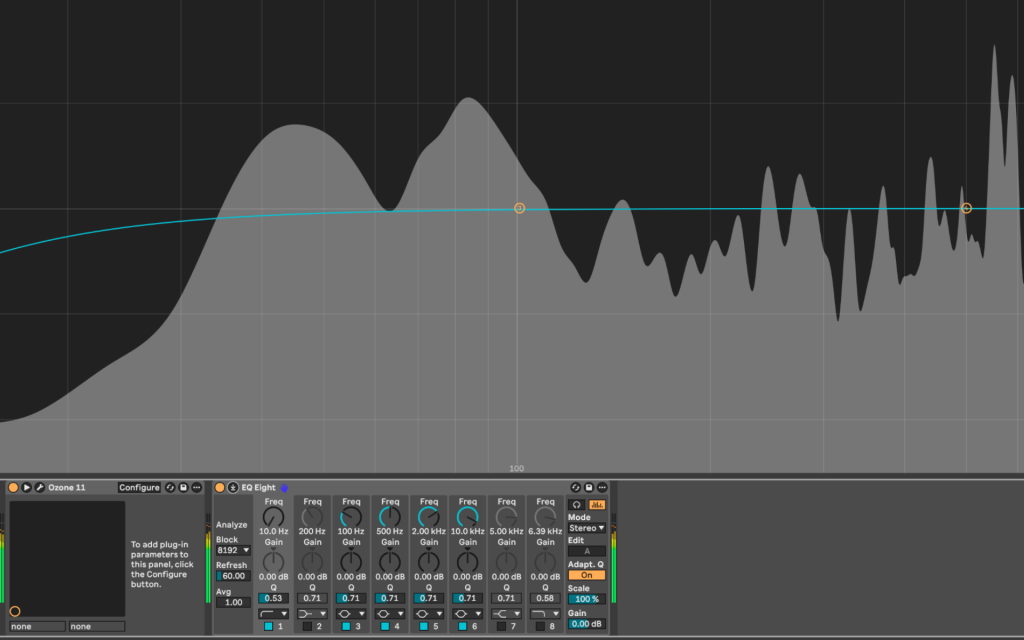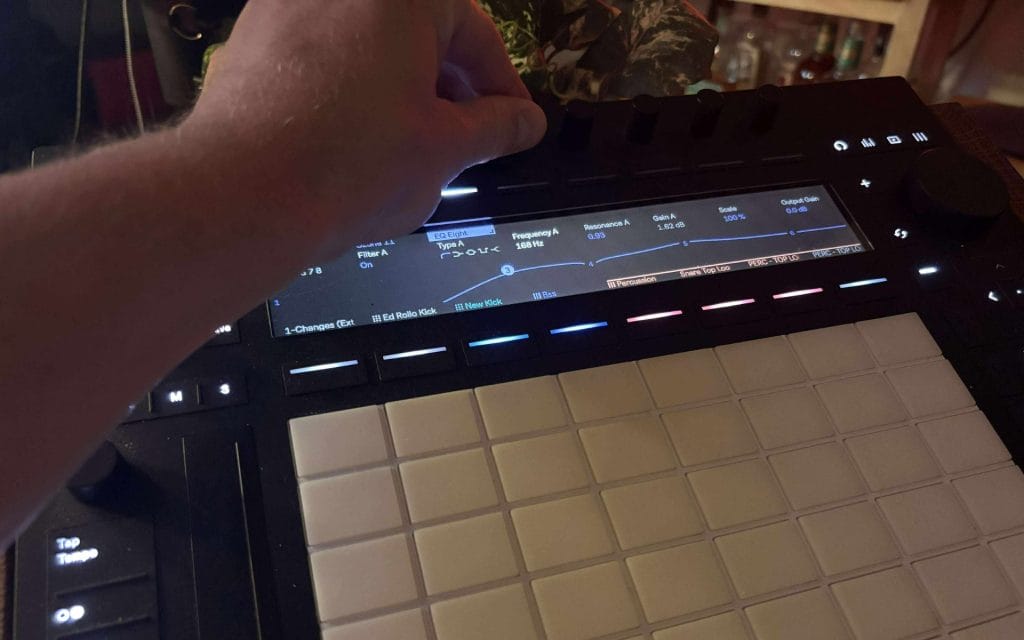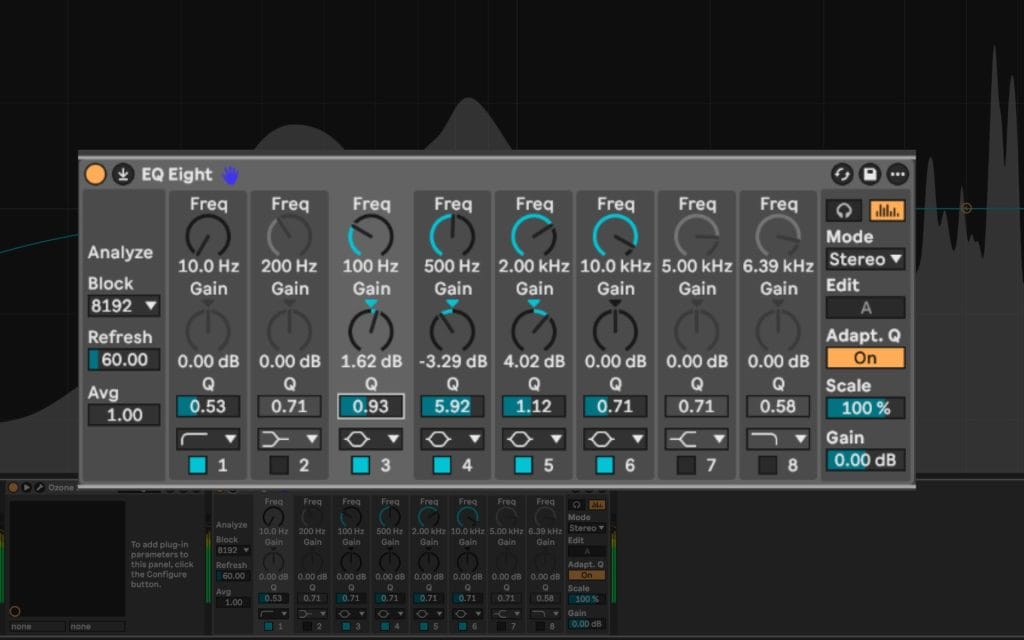
Trust Your Ears in Mixing: Why the Graph Can Mislead You
Table of Contents
Visual tools in music production are powerful while learning to trust your ears in mixing, but they can also be misleading if relied upon exclusviely. Many producers become overly focused on EQ curves, spectrum analyzers, and metering, shaping sounds to look “right” rather than listening to what truly works. The reality is simple: your ears are more important than the graph. Trusting what you hear is the only way to make decisions that translate across different systems.
This article explains why relying too heavily on visuals creates problems, how to strengthen your ear through training and workflow discipline, and when graphs are still helpful. If you have ever boosted highs to “fill the spectrum,” only to end up with a brittle mix, this is for you.
Why Visuals Mislead in Mixing
Visual tools show information in a way that can trick your perception. Spectrum analyzers exaggerate certain areas, and EQ curves encourage symmetry that might not serve the track. A common example is boosting the highs until the curve looks balanced, but once played back, the mix feels sharp or fatiguing. Frequencies around 8–12 kHz often look like they “need” more energy, yet adding it by eye can make vocals harsh and cymbals piercing.
The same thing happens in the low mids. A dip in the analyzer around 300 Hz might tempt you to boost, but that range often muddies up a mix. Trusting visuals over sound leads to chasing graphs instead of balance. Audio mixing is about what you hear, not what looks pretty on screen.
For a deeper overview of equalization basics, iZotope has a great resource called Principles of Equalization: How to EQ Your Mix. Once you understand those fundamentals, focusing on your ears becomes the real next step.
Ear Training for Mixing by Ear
Trusting your ears is not automatic. It requires deliberate ear training and consistent practice. Here are habits that strengthen your ability to mix without leaning on visuals:
- Frequency recognition drills: Use training tools or your DAW to sweep EQ across a pink noise sample and test yourself on identifying 200 Hz, 1 kHz, or 5 kHz by ear. This builds intuition that makes spectrum analyzers less necessary.
- Reference track listening: Play back commercially released songs you admire and listen for balance. Pay attention to where vocals sit, how the low end feels, and how bright the highs are. This calibrates your hearing for translation.
- Mix without visuals: In Ableton or another DAW, collapse your EQ or analyzer windows and make EQ moves by ear alone. Bring visuals back only to confirm. This forces you to trust listening first.
- Check at multiple volumes: Loud playback can disguise harsh highs or muddy lows. Mix at low volume to train yourself to hear balance without the energy boost of loud monitoring.
Ear training is a long-term discipline. Over time, your ability to pinpoint problem ranges without looking at a graph becomes second nature.
Workflow Discipline: Mixing by Ear vs Visuals

Even with good ears, habits matter. Mixing by ear requires workflow discipline to keep you from slipping back into relying on visuals.
- Set limits on visual tools. Decide when to allow analyzers into the process, such as for confirming what you hear, but not for guiding every move.
- Work in short sessions. Ear fatigue is real. After 30–40 minutes, high frequencies start feeling softer, which tricks you into boosting them visually. Take breaks to reset.
- A/B your changes. Always compare before and after EQ moves while listening to the full mix. If you cannot clearly hear the improvement, undo it.
- Switch monitoring systems. Translation is a test of trusting your ears. Play back your mix on headphones, small speakers, and car systems. If it works across setups, your ears are guiding the process correctly.
These practices keep your workflow focused on hearing instead of chasing graphs.
When Graphs Still Help

Graphs and analyzers are not useless—they are simply secondary. They excel at identifying issues you might miss in busy arrangements. For example, analyzers help spot low-end rumble that your speakers cannot reproduce or highlight clashing sub frequencies between a kick and bass.
They also help in mastering, where precision across the full spectrum is critical. In these cases, visual tools are confirmation, not the first point of decision-making. The key is to treat visuals as assistants, not leaders.
Common EQ Visualization Mistakes
Here are mistakes producers often make when mixing with graphs first:
- Boosting highs visually until brittle. An analyzer shows a dip around 10 kHz, so the EQ curve gets pushed up. The result is harsh vocals and piercing cymbals.
- Chasing flat spectrums. Trying to make the analyzer display perfectly even often removes character and creates lifeless mixes.
- Ignoring ear fatigue. Working long hours leads to dull hearing, so producers keep boosting highs visually to compensate.
- Over-correcting low mids. Seeing a valley on a graph tempts you to fill it, but doing so often muddies the mix.
Awareness of these mistakes helps you avoid them and keeps the focus where it belongs—on what you hear.
Conclusion: Your Ears Are the Final Judge
Trusting your ears in mixing is not a slogan. It is a discipline. Graphs, meters, and analyzers have their place, but they should confirm your hearing, not override it. Ear training, workflow discipline, and consistent practice build the confidence to mix without chasing visual perfection.
If the mix sounds balanced to you and translates across playback systems, it does not matter how the EQ curve looks. Trust your ears, and your mixes will hold up better than any graph can promise.
FAQs When Learning To Trust Your Ears in Mixing
Can I ignore spectrum analyzers altogether?
No. Spectrum analyzers are useful for spotting issues beyond your monitoring setup. The mistake is using them to guide every decision. Rely on ears first and use visuals as confirmation.
How do I know if my ears are tired?
If highs start sounding dull, or you feel the urge to boost top end repeatedly, take a break. Ear fatigue usually sets in after 30–40 minutes of intense listening.
What should I listen for when boosting highs?
Pay attention to sibilance in vocals and cymbals. If they start to feel sharp or fatiguing, you have gone too far—even if the analyzer shows room for more.
How do I balance trusting my ears with using visual tools?
Mix by ear first, then check with visuals for confirmation. If the visuals suggest a problem you cannot hear, test it on another playback system before adjusting.



